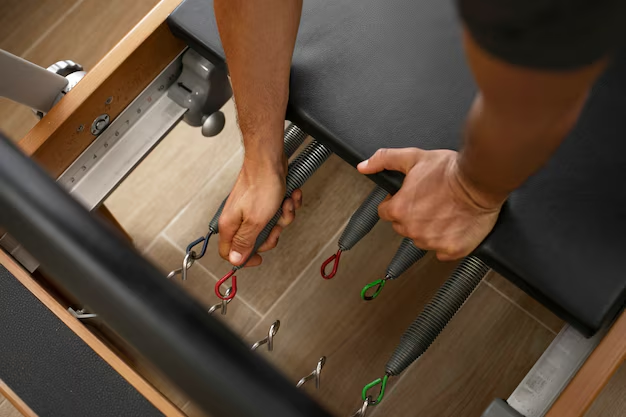Successfully Reinstalling the Drawers in Your KitchenAid Refrigerator
Finding yourself staring at a pile of refrigerator drawers that you've taken out for cleaning or rearranging is a common scenario for many KitchenAid refrigerator owners. Despite the brand's reputation for intuitive design, putting the drawers back in place can sometimes be a puzzle. This guide aims to provide you with a comprehensive understanding of how to efficiently reinstall refrigerator drawers in your KitchenAid model, ensuring that your appliance maintains its optimal organization and functionality.
The Essential Preliminary Check
Getting started with any task requires preparation. Before you grab the drawers and begin the process of reinserting them, it’s crucial to ensure everything is ready. Here's what you need to do:
Gather Your Tools and Materials
Although putting drawers back usually doesn't require special tools, being prepared never hurts:
- A clean cloth: For wiping any areas that may have accumulated dust or moisture.
- Lubricant: Specifically, a food-safe lubricant can be helpful if your drawer slides have become stiff.
- Gloves: Protect your hands from any unanticipated sharp edges.
Inspect the Refrigerator and Drawers
- Cleanliness: Make sure both the interior of the refrigerator and the drawers are clean and dry.
- Integrity: Check the drawers and sliders for any cracks or damage that might affect their operation.
Understanding Your KitchenAid Refrigerator Design
KitchenAid refrigerators are crafted with precision, and understanding their design framework is essential for smooth drawer reinsertion. The instructions presented here are meant for general guidance; however, specifics might slightly vary depending on your refrigerator model.
Components of the Drawer System
- Drawers: Typically removable bins for meat, produce, or dairy.
- Rails and Tracks: Situated inside the fridge to guide and support drawers.
- Glides: Mounted on the sides of the drawers to ensure smooth movement.
Steps for Reinstalling Refrigerator Drawers
Let's delve into the detailed steps on how to effectively and efficiently insert drawers back into your KitchenAid refrigerator.
Step 1: Assess the Situation
Start by examining the layout and available space in your refrigerator. Understanding where each drawer belongs will make the process more intuitive.
Step 2: Position the Drawer
- Hold the Drawer Steady: Grip the drawer on both sides for balance.
- Align with Rails: Make sure the drawer glides align parallel to the refrigerator's track system.
Step 3: Insert the Drawer into the Rails
- Gently Slide In: Push the drawer slowly into the refrigerator, ensuring the glides on either side match and fit smoothly into the rails.
- Check Alignment: If it doesn't slide easily, pull back and recheck the alignment before attempting again.
Step 4: Ensure Proper Fit and Functionality
Once the drawer is back in place:
- Open and Close: Operate the drawer to ensure it moves fluidly along the tracks.
- Adjust if Necessary: If movement is too stiff or not smooth, it may need slight adjustments or a light application of lubricant.
Troubleshooting Common Issues
Sometimes, obstacles arise even with the best-laid plans. Here are common issues and solutions:
Stuck or Jammed Drawers
- Recheck Alignment: Often, this occurs due to misalignment; remove and retry the fitting process.
- Clear Obstructions: Check for items that may block the drawer’s movement.
Sagging or Uneven Drawers
- Evaluate Drawer Integrity: Ensure glides are securely attached to the drawers.
- Inspect Tracks: Check that the refrigerator tracks are straight and unobstructed.
Uneven Sliding or Rough Movement
- Apply Lubricant: A touch of lubricant can often ease rough motion.
- Clean Tracks: Dirt and debris can affect motion; ensure areas are clean.
Additional Tips for KitchenAid Refrigerator Maintenance
Proactive maintenance can spare you future headaches when dealing with kitchen appliances. Consider these tips for keeping your KitchenAid refrigerator running smoothly:
Regular Cleaning
- Schedule Cleanings: Commit to regular cleaning to prevent build-up that complicates drawer reinstallation.
- Use Gentle Cleaners: Avoid harsh chemicals that can damage surfaces.
Organization Strategies
- Label Drawers: Clearly labeling helps family members return them correctly after cleaning.
- Encourage Order: Encourage family members to keep the refrigerator tidy to avoid scrambling drawers.
Monitor Glide & Track Condition
- Regularly Inspect: Keep an eye on the condition of glides and tracks for wear and tear.
- Early Replacement: Swap out damaged components early to prevent further appliance issues.
Visual Summary: Key Tips for Reinstalling KitchenAid Refrigerator Drawers
Here’s a quick-reference list to help you get those drawers in their rightful places efficiently:
- 🔍 Preparation is Key: Check all parts and processes before starting.
- 🛠 Align Carefully: Ensure drawer glides fit securely and parallel to tracks.
- ✅ Test Functionality: Always check the movement once installed.
- 🚨 Troubleshoot Promptly: Don’t force draws; recheck alignment or use a lubricant.
- 🧼 Maintain Regularly: Clean regularly to prevent misalignment and damage.
Putting drawers back into your KitchenAid refrigerator shouldn't be a source of frustration. With a thoughtful approach and the right guidance, you can efficiently achieve a well-organized and smoothly operating refrigerator. Keep these insights handy, and you’ll be navigating your KitchenAid with ease and confidence.
